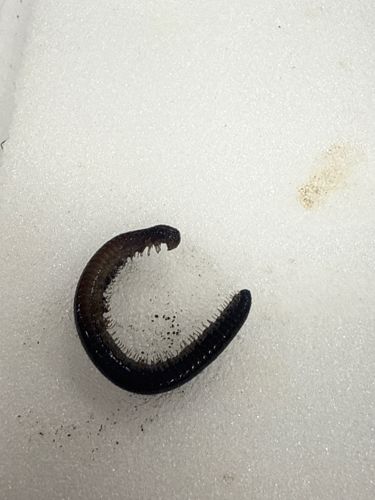Millipede
Scientific Name: Diplopoda (Class)
Order & Family: Varies widely within Diplopoda class (e.g., Julida, Polydesmida)
Size: Most common species range from 0.5 inches to 4 inches (1.2 cm to 10 cm), though some tropical species can reach up to 15 inches (38 cm).

Natural Habitat
Typically found in dark, damp places such as under rocks, logs, leaf litter, in soil, and sometimes in basements or cellars. They prefer habitats with high humidity and decaying organic matter.
Diet & Feeding
Detritivores; they primarily feed on decaying organic matter such as leaves, wood, fungi, and sometimes moist plant material. They play a crucial role in decomposition.
Behavior Patterns
Nocturnal, slow-moving, and non-aggressive. When threatened, they often curl into a tight coil to protect their soft underside. Many species can excrete noxious fluids as a defense mechanism.
Risks & Benefits
Risks: Generally harmless to humans, but some species can secrete irritating fluids that may cause skin discoloration or mild irritation if handled. Benefits: They are beneficial decomposers, breaking down organic matter and enriching soil fertility, contributing to healthy ecosystems.
Identified on: 10/3/2025